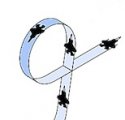There probably wouldn’t be any severe political consequences for anyone, frankly. All planes anywhere are developed with very strict parameters defined and monitored by their clients. That’s the whole point of doing years of testing. If the J-20 falls short in real life use then that’s a doctrine problem with the proprietor, not a deliverance problem with the provider or engineering. If it’s a problem with how the PLAAF defined their design parameters, it’s also a learning experience for the PLAAF, not a punishable offense. Any good process design is defined around finding misjudgments early and rectifying them as you go so that they don’t accumulate. If China’s institutional practices on technological development were so draconian that they primarily focused on impressing principals and proprietors rather than well designed accountability mechanisms then they wouldn’t have come this far in the first place.
To start apologies if I have ruffled any feathers, its NOT my intention to undermine the J-20 or Chengdu aviation, both of which I admire greatly and respect,,,...
So, I pray that I may add some clarity, the SU-35 is very good in the WVR context, with OVT, it offers a great deal of maneuverability even "post stall", and to be frank it would give the SU-57, F-22, and F-35 each one a "run for their money".. I believe the J-20 to be a very fine airplane, likely much more L/O than the SU-57,,, possibly even sharing parity or even superiority to the F-22 and F-35... we just don't know at this stage, and I'm completely fine with that..
as Mangiangrexue stated earlier,, tactics and strategy are important to everyone in this game, and flying against the J-20, everybody learns,, so I was just thinking out loud?? there's always the question of who or whom has the "mojo"..
I do however disagree with you latenlazy, even though I think we are often on the same page?? I believe engineering and design, as well as the manufacturer have primary control and responsibility to deliver an aircraft that hopefully will meet or exceed the customers expectations, after all, politicians on everybody's team require education when it comes to what is and is not economically and physically attainable.
so once we have determined there is a political will and desire, and the cash, then the rest is up to the design team/ manufacturer to deliver their best??

